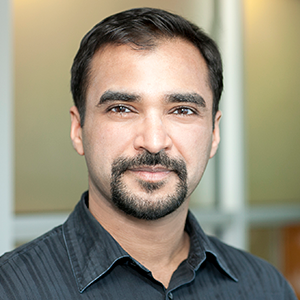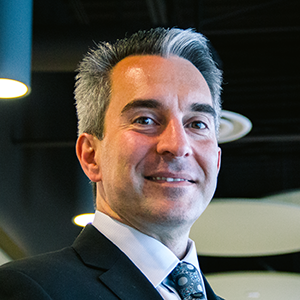Q: Philip, in one of your recent white papers, you warn that a devastating data breach can begin with a single compromised privileged account. What sort of advice do you offer your customers so they can protect themselves against advanced hackers and malicious insiders?
Phil Lieberman: We believe that there is no way to protect customers from advanced cyber threats. Perimeter solutions and end-point solutions have all failed to deliver the promised protection. The game has shifted to network and identity management redesign to provide acceptable and predictable losses with limits.
In our minds, you cannot steal what is not there and you cannot laterally move within an environment if you cannot exploit the credentials that provide lateral access. To achieve these objectives, we have designed technologies and processes to clean machines of cached credentials, reduce the lifetime of privileged identities to hours, and require users to use local escalation on the machine(s) they need to access -- and only for a limited amount of time.
The idea is simple: any credentials that are stolen have limited lifetimes and limited scope. The operation of our technology is automated, with the ability to adapt to the environment as it changes (i.e. new systems) and quickly remediate threats when under attack.
Going a step further, we believe that user end-points are compromised and that process injection/Remote Access Toolkits (RATs) are a way of life. To combat this threat, we have removed credentials (user names, passwords, SSH keys, pass phrases) from the end-points/workstations and use bastion hosts like Terminal Server to host client applications. With this architecture, we can securely launch applications outside of the control of the end-point, feed them with credentials, and stream back video to the compromised end-point -- depriving the attacker of credentials and implementing tamper protection.
Finally, we are big believers of multi-factor authentication as a useful method to make key loggers and RATs less effective. We have both free and commercial MFA support in our product, as well as re-challenge technology to help with man-in-the middle attacks.
Q: In a recent survey which measured the attitudes of nearly 170 IT security pros, you found that 69% of respondents don't feel they are using their IT security products to their full potential and 71% believe this is putting their company, and possibly customers, at risk. Were you surprised by those findings -- and why?
Lieberman: This did not surprise us at all. Beginning more than 10 years ago, we started to see that IT had lost count and control of the infrastructure due to scale and complexity. Management's general position of IT security has been to purchase a product, install it, and let it do its job.
The fly in the ointment of buying a security solution or appliance is that management frequently does not provide the training and resources necessary to fully implement what has been purchased.
Our philosophy is to provide solutions that immediately automate privileged identity security and operations to achieve scale and coverage. Our strategy to deploy in hours, and immediately shrink the surface area of attack, is in direct conflict with a security industry that is dependent on long professional services contracts and projects that take years to achieve little -- if any -- ROI.
Our competitor relishes their business model that uses a vault for passwords and requires professional services to manually wire everything up to a customer environment. If anything changes in the customer environment, there is another charge incurred for rewiring.
Our philosophy is to make the wiring happen automatically and forego the manual labor of setting up vaults in the first place. With our strategy, there is time to value in hours and an ROI achieved in less than 30 days, without humans being responsible for the care and feeding of the security solution.
Q: Lieberman was named the 2015 Microsoft Application Development Partner of the Year which is quite an honor. What are the implications of winning such an award?
Lieberman: The 2015 Microsoft Partner of the Year award that Lieberman Software received was an acknowledgement of the scale and scope of our existing technology's market penetration and its real world impact for both Microsoft and its customers.
Our technology for managing privileged identities has been transparently woven into the lives of millions of people each day. We all depend on the conveniences of modern life and its services, such as power, communication, Internet, financial service, and national defense. All of these systems are part of our Critical National Infrastructure, and our technology is used every day worldwide to help the leaders in these areas protect their systems by securing their privileged access and identities. Our technology and work distributing this technology has made a significant impact on people's lives by protecting the services that they use and minimizing the consequences of cyber attacks.
Many people outside of the security industry are unaware of our company and its products, but almost everyone is affected by our technology. This award provides well-deserved recognition of the work we have done. It also points a bright light at the need for customers of Microsoft to think about how automated privilege management is critical to the success of their companies and to their societies.
Q: What do you feel you get out of being a Black Hat USA sponsor year after year?
Lieberman: Our yearly cyber-defense campaigns are there to shake up the security industry with a wake-up call that perimeter solutions cannot make up for fundamental weaknesses within the interior.
Most companies have minimal to no automation of privileged identities and there is little thought given to processes that pollute the environment with cached credentials that can be picked up and used by attackers with little to no skill. This situation can be remediated by changes in the behavior of IT and users given an understanding that some conveniences (i.e. common static passwords, fixed SSH keys, use of domain administrator credentials for management of systems) are too expensive.
We also want to alert attendees that defenses simply don't work most of the time, and the game has evolved to one of "acceptable loss" and planned resilience with the minimization of down time from attacks. The amount of loss is a matter of organizations planning and execution as well as the use of appropriate technologies and processes that regularly sweep the environment to remove credentials that can be exploited.
We feel that by educating customers about the risks of privileged identity misuse at our booth, and by guiding them to safer processes and appropriate automation technology via demonstrations of our products, we can help them incur the minimum amount of losses when their perimeter defenses fail.










